
 |
||
|
SEASONAL REGIMEN:THE SCIENCE OF HEALTH PROTECTION |
|||
|
|
|||
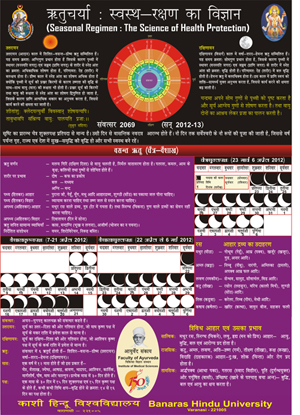 |
The Principles of Ayurveda are based
on universal laws. One of them is similarity in governing of universe
and body of all living beings. The universe is governed by properties
of- Solar, Lunar and Air through Sun, Moon and Air, which is represented
as Pitta, Kapha and Vata In all living being. Thus it is obvious that
any change in the environment has its effect on all living beings. According to Glenn R Gibson of United
Kingdom that the main role of diet is to provide nutrients to meet host
physiological requirements. As research behind diet and health has evolved,
so has the concept of 'functional foods' become popular. Foods which are
touted as being 'functional' are thought to exert certain positive properties
over and above their normal nutritional value. While not universally popular
and sometimes plagued by inadequate research/claims, the concept is certainly
commercially successful, e.g. The Institute of Grocery Distributors (http://www.igd.com)
estimates that the functional food market in the UK in 2007 will have
annual sales worth around £1800m. Recent years have seen a major change in how activities of the human gastrointestinal tract are perceived. This has been driven by increased knowledge of the gut microflora composition and activities. This has been helped by a shift away from traditional microbiological culture methods to the use of molecular markers of culture identity. The colon is the most heavily populated region of the gastrointestinal tract and, because of this resident microbiota, is one of the most metabolically active organs in the body. The concept of modulating activities directed towards improving gut microbial function has a long history, as diet can have a major effect on the gut microflora activities. Whilst some indigenous bacteria can be pathogenic (e.g. proteolytic clostridia and bacteroides), it is also the case that some genera / species may offer health promoting attributes. For example, bifidobacteria and lactobacilli are thought to exert powerful antipathogenic effects and are mainly responsible for 'colonisation resistance' in the gut. Moreover, the same genera have been attributed with other beneficial aspects: such as protection from bowel tumours and metabolism of cholesterol and other lipids in the gut. Whilst many of the health promoting aspects have yet to be definitively proven in humans, it would appear that there is value in eliciting a change away from a gut flora dominated by potentially harmful bacteria towards a more benign, or beneficial, composition. In fact, the seasonal regimen has close relation with the concept of Agni (digestive fire), which not only transform the food substances into nutrition but also gives strength to the living body. Apart from that it also helps in multiplication of beneficial bacterial growth in the body. |
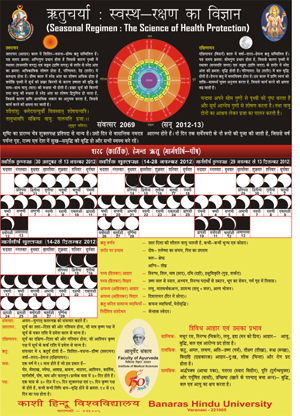 |
|
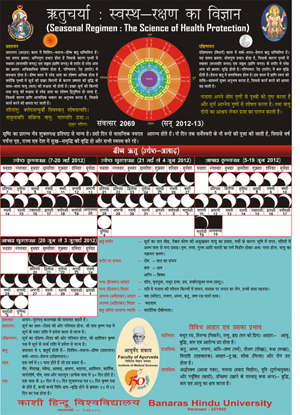 |
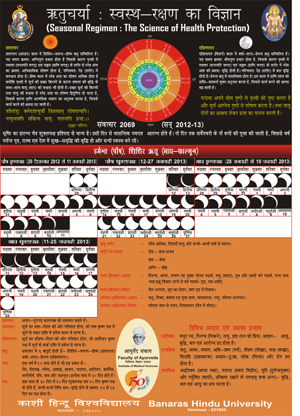 |
||
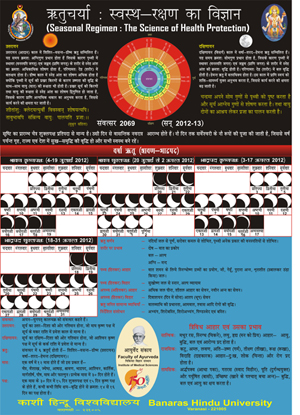 |
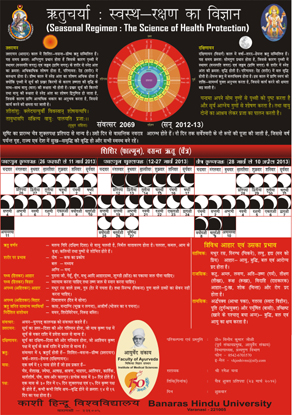 |
||
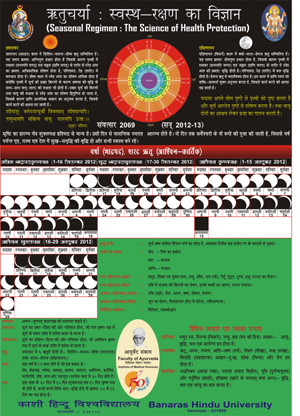 |
|||